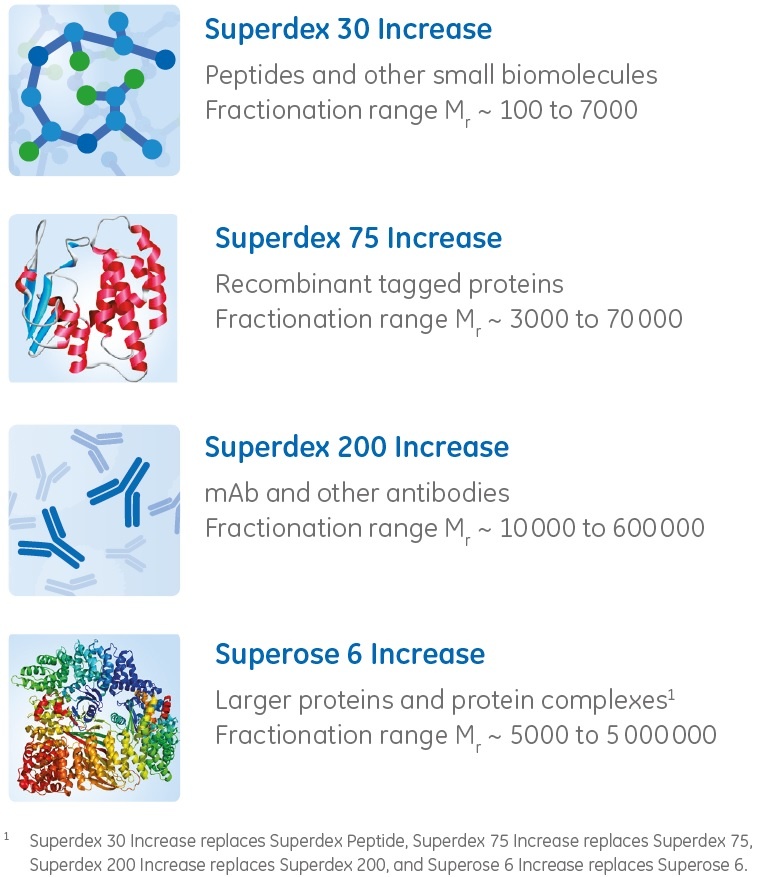Looking for a solution to biomolecule analysis? Familiar with size exclusion chromatography but need improved analysis? If so, this article outlining new generation agarose-based resins might just be what you need...
 New generation agarose-based size exclusion chromatography resins from GE Healthcare are well-suited to biomolecular analysis. The columns together cover separation of a broad molecular weight range (Mr 100 to 5000000) from small peptides up to large protein complexes. The image to the right shows the four different resins available Superdex™ 30 Increase, Superdex 75 Increase, Superdex 200 Increase and Superose™ 6 Increase), together with recommended areas of analysis.
New generation agarose-based size exclusion chromatography resins from GE Healthcare are well-suited to biomolecular analysis. The columns together cover separation of a broad molecular weight range (Mr 100 to 5000000) from small peptides up to large protein complexes. The image to the right shows the four different resins available Superdex™ 30 Increase, Superdex 75 Increase, Superdex 200 Increase and Superose™ 6 Increase), together with recommended areas of analysis.
The resins are produced with a novel manufacturing method resulting in more rigid, smaller beads with a narrower particle size distribution, compared with the original Superose/Superdex resins. The consequence of this improvement is shorter runtime and increased resolution compared to the original Superose/Superdex columns.
New-generation SEC resins from GE are packed in three different column sizes to fit different needs in biomolecular analysis:
 10 mm × 300 mm
10 mm × 300 mm
- high-resolution analysis (25 to 500 μL sample volume)
- best choice if sample amount is not limited
 3.2 mm × 300 mm
3.2 mm × 300 mm
- high-resolution analysis (4 to 50 μL sample volume)
- low sample and buffer consumption
![]()
 5 mm × 150 mm
5 mm × 150 mm
- purity check
- rapid screening
- low sample (4 to 50 μL sample volume) and buffer consumption
These new generation agarose-based size exclusion chromatography columns have several features that ensure good analytical SEC data, being:
- column-to-column reproducibility
- resin batch-to-batch reproducibility
- lifetime stability
- easy inspection of the packed resin bed
- stability with a range of buffers
 For more details on these new generation agarose-based resins and the benefits they offer to bioanalytical SEC, click on the button below to visit the educational microsite...
For more details on these new generation agarose-based resins and the benefits they offer to bioanalytical SEC, click on the button below to visit the educational microsite...




